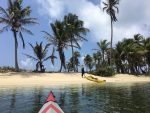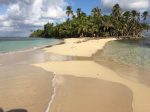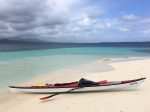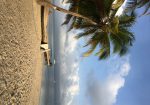Haz clic aquí para leer en español
Written by Fidgit
A Brief History

The Guna Yala is an archipelago of 378 islands in northeastern Panama. In the late 1600s, the Scots tried to establish a colony in what was known as “the Darien Scheme” but almost all of the 2500 settlers were wiped out by disease and famine, undercut as the effort was by England and the East India Trading Company. The failure of this colony is directly linked to Scotland’s bankruptcy and subsequent loss of sovereignty to England. Today all that remains to commemorate their effort is Punta Escoses, a lonely, rocky point south of Ustupo.
After that, as all of Panama was a part of Colombia, the area became part of the Tulenega Shire and the Guna were recognized as property owners. The Guna were originally river people who moved up the Colombian coast and out to the sea to escape ongoing war with neighboring tribes and Spanish colonists. Though, according to some Guna (Previously Kuna, or Cuna, until in 2010 they voted the letter K out of their alphabet), they moved out here because of the inland mosquitoes.

Panama separated from Colombia in 1903, and, in 1925, the Guna coordinated the Revolución de Tule, an attack on Panamanian police who were wielding and abusing power in the region. With this skirmish, they won their independence, and, with US backing, they negotiated the autonomous territory of Comarca Guna Yala.
Under this arrangement, only the Guna can own land and the region is governed by a Congreso, and each community has a head called a silas. We frequently saw representatives of the congreso motoring out to islands to collect fees, enforce policies, and settle disputes. One island we camped on was smaller than a football field and had over 60 owners. The various families had a rotation for staying in the huts on the island throughout the year while they lived in their community the rest of the year. The family we spoke with said they enjoyed the time on the island to fish and be with relatives. Other families were trying to build cabañas, which have popped up on almost every island in the Carti area. This is where the congreso come in.
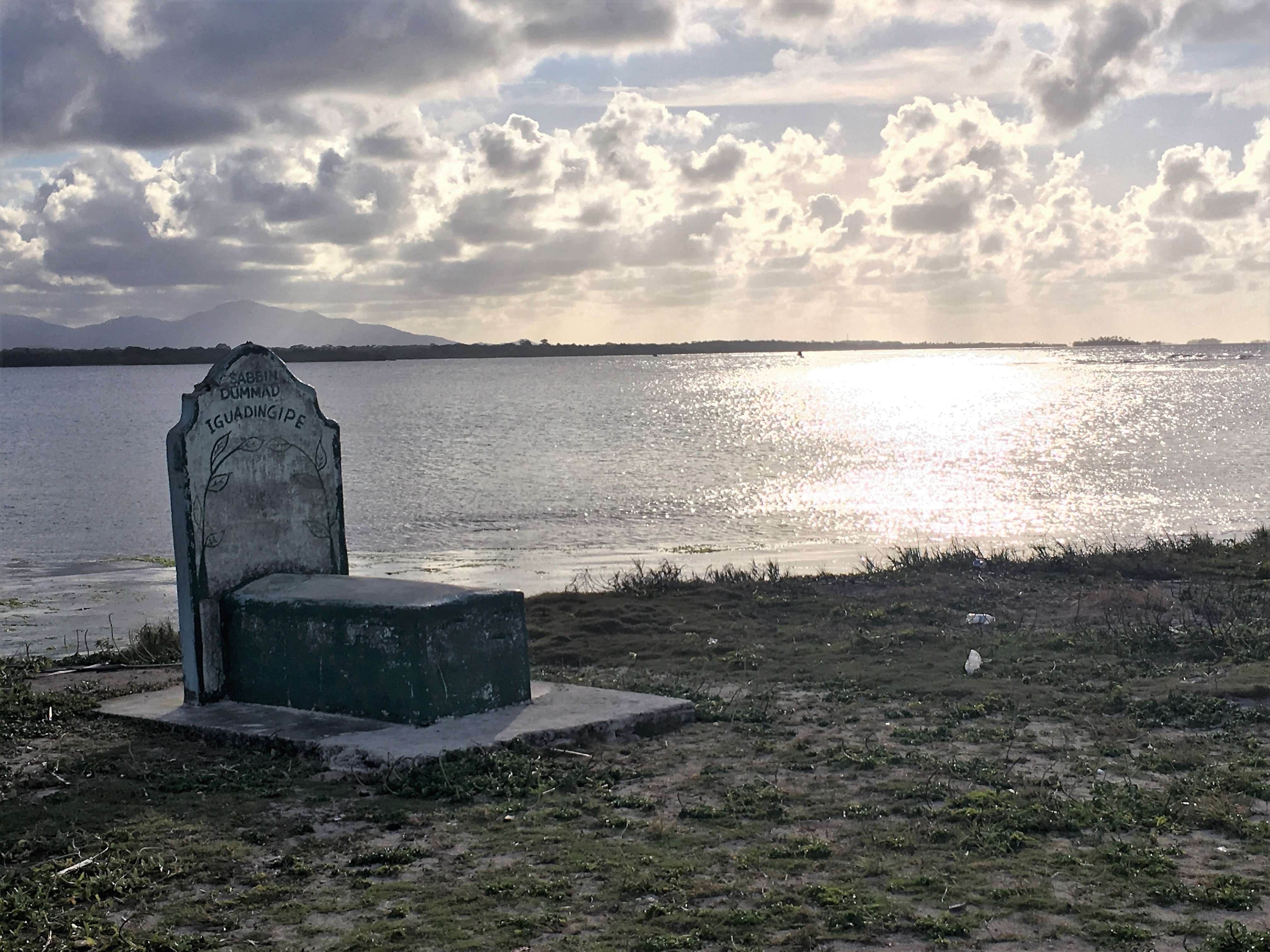
A coupled interesting notes about the Guna people is that they are a matriarchal society and hold community-wide Puberty Ceremonies when young women have their first period. They acknowledge gender fluidity, though from what I have learned this is usually Omeggid, when an individual who was born male moves toward being female. They also have the largest per capita number of albinos globally.

Folklore
Storytelling is fundamental to the Guna. The pace of life out here is slow, and whereas I spend most of my time in motion and travel, I found their lifestyle fascinating to the point of bafflement. They are occupied with the daily business of gathering fuel for kitchen fires, collecting coconuts, and the men fish while the women make molas. Around these activities a lot of time is spent watching the water and sitting in hammocks. Conversations pause often to comment on and identify a passing boat. This leaves a lot of time for relaying oral traditions both within families and at community-wide events.
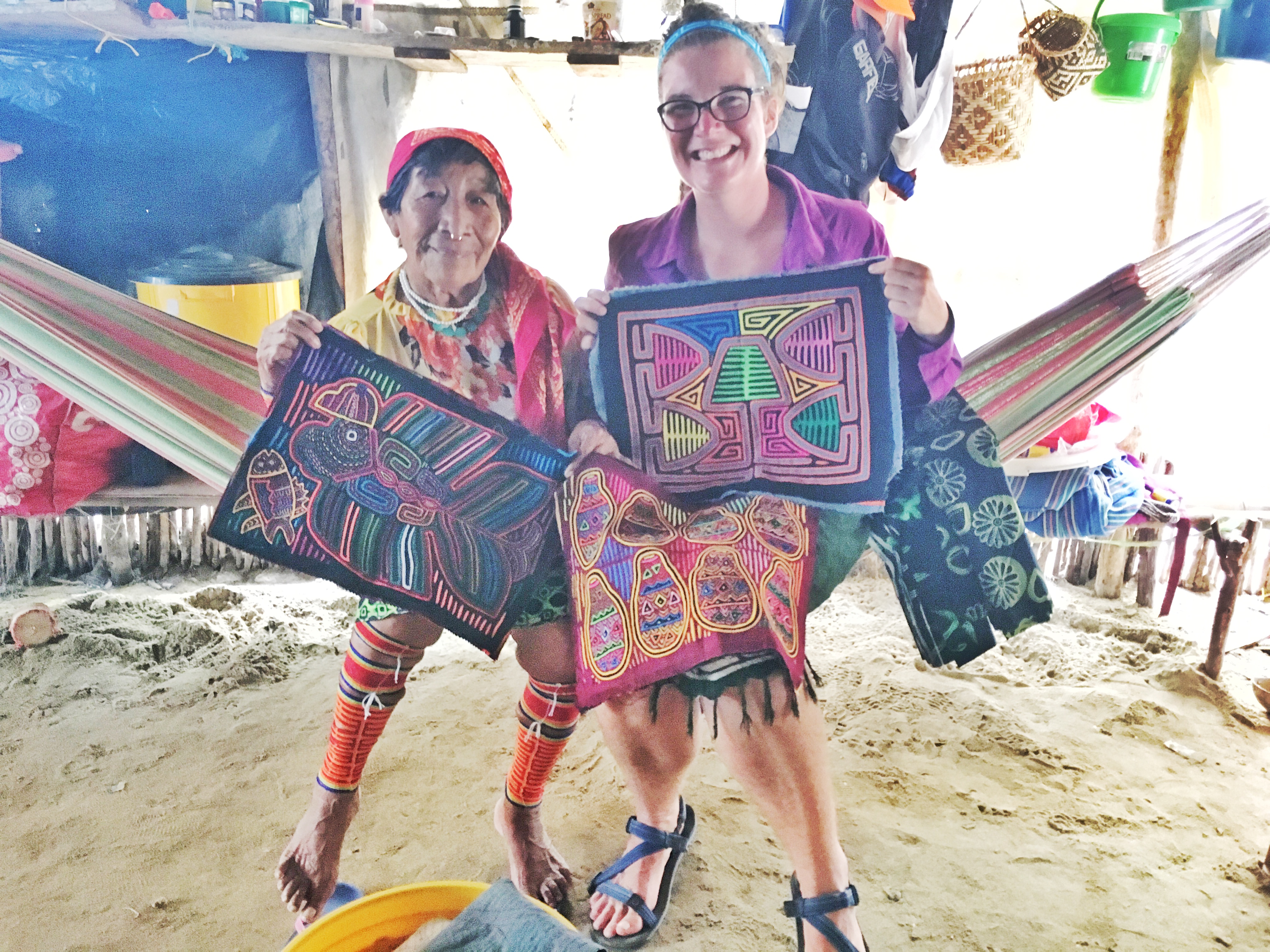

I was fortunate to spend an evening with Nemesio, a guide and respected community member as he showed us a book of drawings he had made depicting the Guna creation story. He consented to my recording the story and did his best to pack hours of lore into a short span of time. If you understand Spanish, here is a chance to hear it from an original source.
Another story I heard was that in the days when the Guna executed their own justice, a murderer was condemned to be buried alive alongside their victim. In the current arrangement with Panama, serious crime is exported to Panama city and the perpetrator is tried according to Panamanian law.
Another lore paints people who are albino as special community members, children of the sun, tasked with fighting a dragon who comes at night. In some tellings, the dragon comes as lightning. In others it is when there is an eclipse. In either instance, at the time of the threat, everyone else must go hide indoors, while the albinos go to battle.
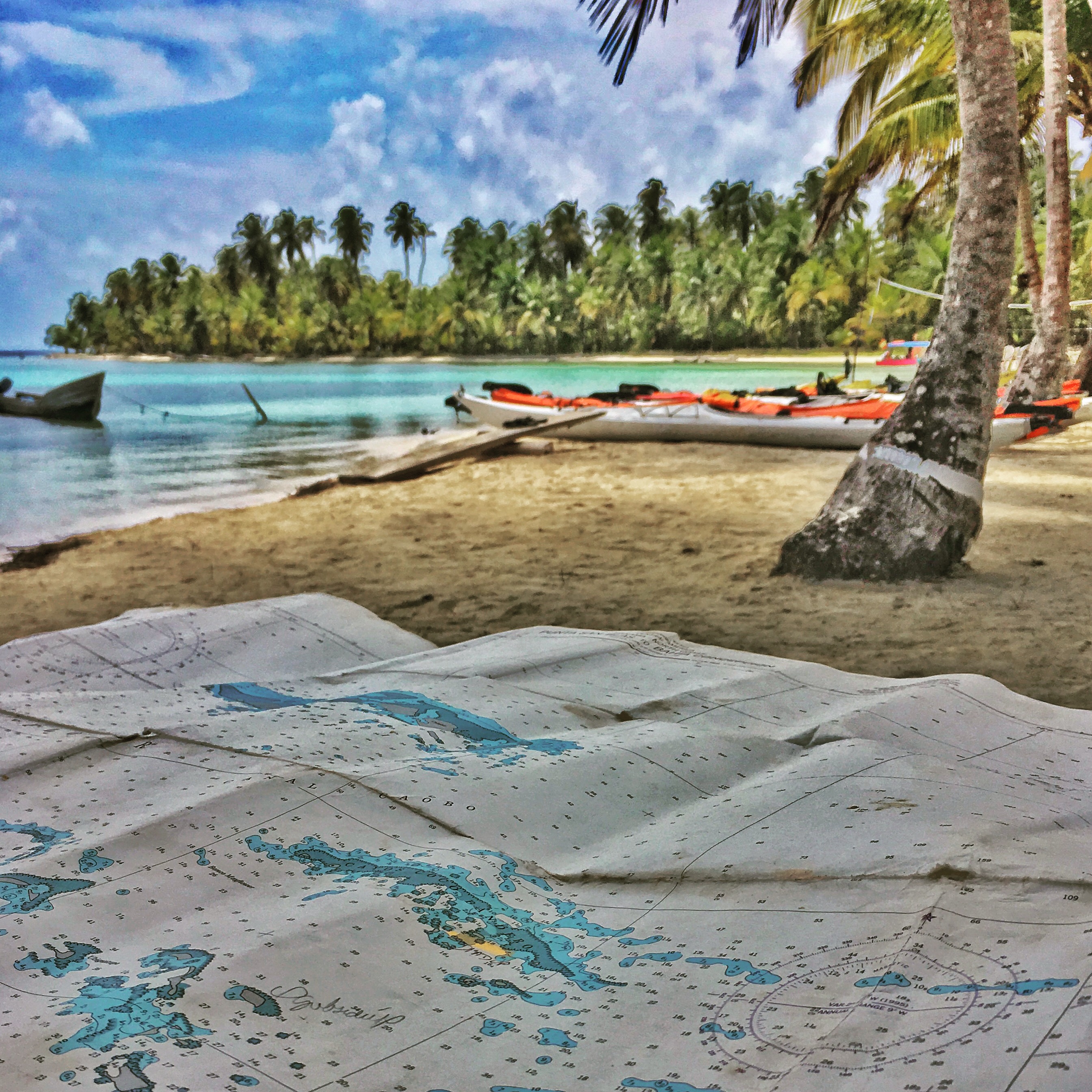
As an Outsider
I heard two primary and very different veins of experience from other outsiders, mostly sailors, who had visited Guna Yala. One side focused on the quantity of trash and the fact that you must pay for everything in the comarca. That every time you weigh anchor, step foot on an island, snap a picture of a Guna, or if you so much as pick up a coconut off the ground, you will be charged money for it.
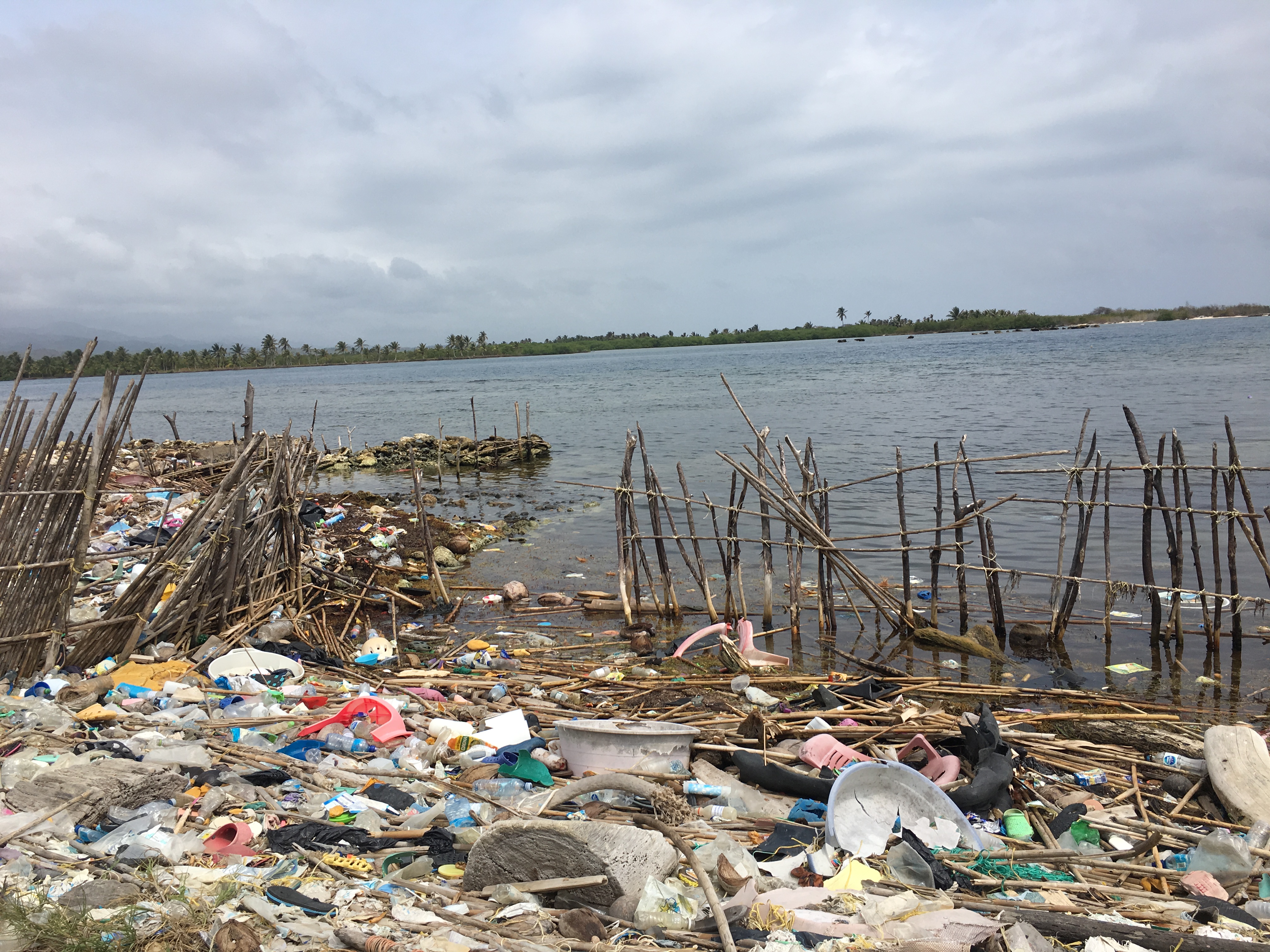
The flip side were those who praised the beautiful white sand beaches, the crystal clear waters, beautiful reefs, and curious Guna people who came to visit them. They described it as stepping outside of time, among the grass roof huts and barefoot people in colorful traditional dress.
The disparity between the descriptions was great and I experienced both in the two weeks I spent kayaking there. Some points for visitors to understand are:
1) The Guna have two sources of income: selling coconuts and tourism.
According to their laws, every coconut is someone’s property, as they are sold either to Colombia or Panama. So when you take a coconut, you are taking a piece of their livelihood. You are expected to pay for this.
For decades now visitors have been coming and taking pictures, primarily of their women, many of these pictures ended up in books or on postcards. Their reasoning is, you may make money or otherwise gain from your photo and they will never see any of that profit. People pay models to take photographs. So expecting $1 for a photo is really not asking much.
2) You are entering a region where you have to comply with two governments. The Panamanian and the Guna. The Panamanian authorities are interested in keeping the area safe and patrol the waters and islands for narcos. The Guna have their own system and will require a permit and $20 entrance fee to the comarca, and within that, each community, island, family, and individual have their own expectations. Thus, prices are different. Randomly “taxes” are applied to purchases (though in the instance this happened to us I suspect it was just because they didn’t have change and preferred to keep the couple extra dollars).
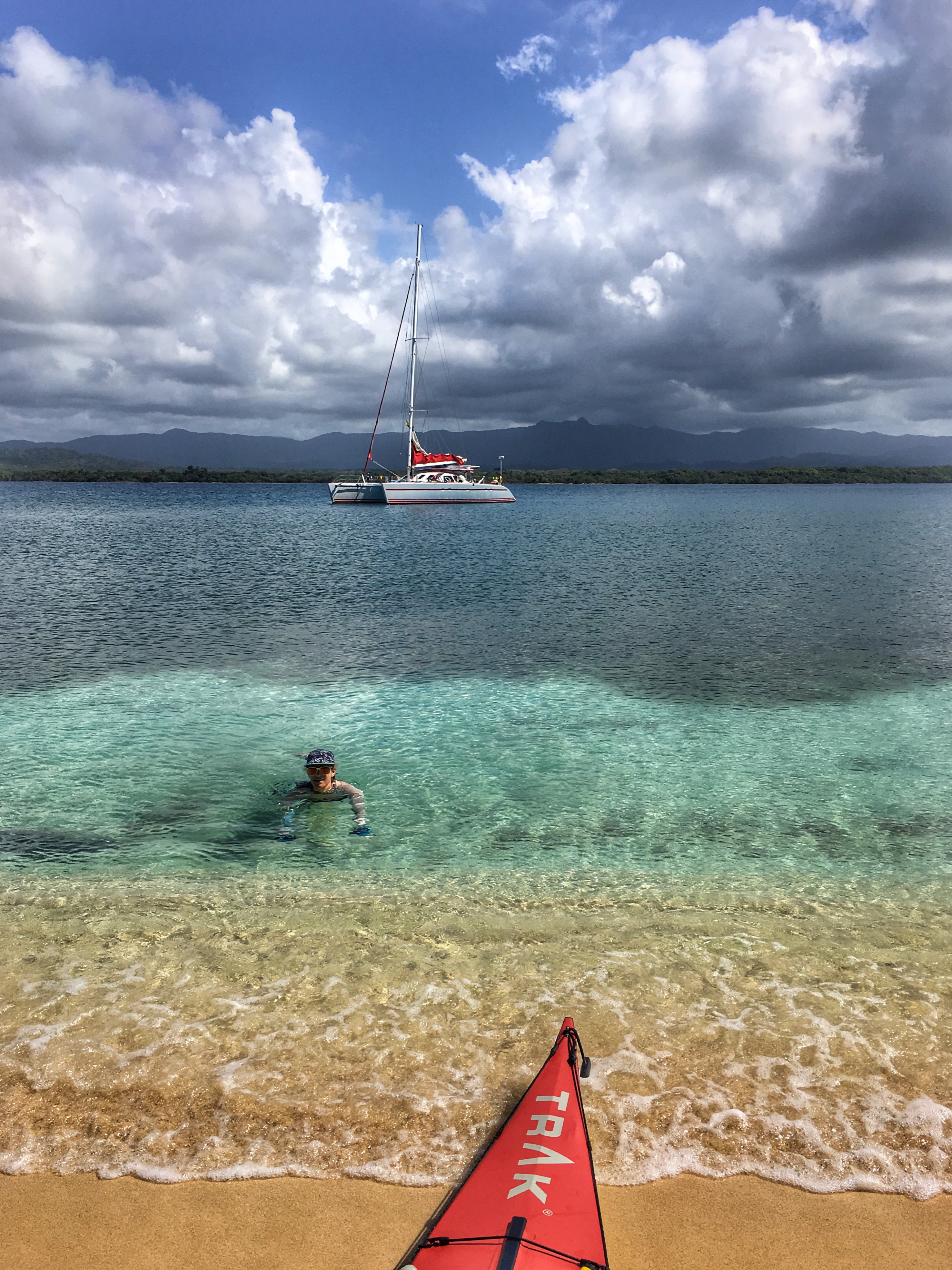
I had an interesting “aha moment” in the wake of that interaction. I was chafing at the various fees. I felt like I was being milked like a cash cow and was further confused and frustrated by the variable rates. I thought something along the lines of, “How can they move in here, claim these lands and apply rules and fees to me just because I am an outsider?”
A wave washed over me and flipped the thought around, brought me face to face with my own privileged indignance, realizing that the Guna are one of few indigenous people who won the fight for the land they wanted and earned the freedom to make their own laws to benefit their people as they see fit. One of the reasons their culture maintains its autonomy is because of keeping other cultures at a distance.
While my complaint was about being charged a few extra dollars, when the situation is flipped in the countless other instances throughout the centuries of anglos moving in on indigenous lands, the extra cost was extolled in land and blood.
Did you know that our partners, Forever Cairn plant a tree for every purchase you make?!
Buy a tee, plant a tree!
Los Guna Yala: Un Resumen
Escrito por Fidgit
Traduccion por Fabiana Grespan Vial
Una Breve Historia

El Guna Yala es un archipiélago de 378 islas en el noreste de Panamá. A fines de 1600, los escoceses intentaron establecer una colonia en lo que se conoció como “el Esquema Darien”, pero casi todos los 2500 colonos fueron eliminados por la enfermedad y la hambruna, ya que el esfuerzo fue realizado por Inglaterra y East India Trading Company . El fracaso de esta colonia está directamente relacionado con la bancarrota de Escocia y la subsiguiente pérdida de soberanía a Inglaterra. Hoy todo lo que queda para conmemorar su esfuerzo es Punta Escocés, un punto solitario y rocoso al sur de Ustupo.
Después de eso, ya que todo Panamá era parte de Colombia, el área se convirtió en parte de Tulenega Shire y los Guna fueron reconocidos como dueños de propiedades. Los gunas eran originalmente personas de río que se movían hacia la costa colombiana y hacia el mar para escapar de la guerra en curso con las tribus vecinas y los colonos españoles. Aunque, según algunos Guna (Anteriormente Kuna, o Cuna, hasta que en 2010 votaron la letra K de su alfabeto), se mudaron aquí debido a los mosquitos del interior.

Panamá se separó de Colombia en 1903, y en 1925, los Guna coordinaron la Revolución de Tule, un ataque contra la policía panameña quienes estaban empuñando y abusando el poder en la región. Con esta pelea, ganaron su independencia, y con el apoyo de Estados Unidos, negociaron el territorio autónomo de la Comarca Guna Yala.
Bajo este acuerdo, solo los Guna pueden poseer tierras y la región está gobernada por un Congreso, y cada comunidad tiene un jefe llamado silas. Con frecuencia, vimos a representantes del congreso que se dirigían a las islas para cobrar tarifas, hacer cumplir políticas y resolver disputas. Una isla en la que acampamos era más pequeña que un campo de fútbol y tenía más de 60 propietarios. Las distintas familias tenían una rotación para quedarse en las cabañas en la isla durante el año, mientras que viven en su comunidad el resto del año. La familia con la que hablamos dijo que disfrutaron el tiempo en la isla para pescar y estar con familiares. Otras familias intentaban construir cabañas, que han aparecido en casi todas las islas del área de Carti. Aquí es donde entra el congreso.

Una serie de notas interesantes sobre la gente Guna es que son una sociedad matriarcal y tienen ceremonias de pubertad en la comunidad cuando las mujeres jóvenes tienen su primer período. Reconocen la fluidez de género, aunque de lo que he aprendido esto suele ser Omeggid, cuando un individuo que nació varón cambia a ser mujer. También tienen el mayor número per cápita de albinos a nivel mundial.

Folklore
La narración de cuentos es fundamental para la guna. El ritmo de la vida aquí es lento, y mientras yo paso la mayor parte de mi tiempo en movimiento y viajes, encontré su estilo de vida fascinante hasta el punto de desconcierto. Están ocupados con el negocio diario de recolectar combustible para incendios de cocina, recolectar cocos, y los hombres pescan mientras las mujeres hacen molas. Alrededor de estas actividades se pasa mucho tiempo observando el agua y sentados en hamacas. Las conversaciones se detienen a menudo para comentar e identificar un barco que pasa. Esto deja mucho tiempo para transmitir las tradiciones orales tanto dentro de las familias como en eventos comunitarios.


Tuve la suerte de pasar una tarde con Nemesio, un guía y miembro respetado de la comunidad, mientras nos mostraba un libro de dibujos que había hecho describiendo la historia de la creación Guna. Aceptó que grabará la historia e hizo todo lo posible por acumular horas de experiencia en un corto período de tiempo. Aqui tienes la oportunidad de escucharlo de una fuente original.
Otra historia que escuche es que en los días en que los Guna ejecutaban su propia justicia, un asesino fue condenado a ser enterrado vivo junto a su víctima. En el acuerdo actual con Panamá, el delito grave se exporta a la ciudad de Panamá y el autor es juzgado de acuerdo con la legislación panameña.
Otra tradición pinta a las personas albinas como miembros especiales de la comunidad, hijos del sol, encargados de luchar contra un dragón que viene de noche. En algunas leyendas, el dragón viene como un rayo. En otros es cuando hay un eclipse. En cualquier caso, en el momento de la amenaza, todos los demás deben esconderse en el interior, mientras que los albinos van a la batalla.

Como una Forastera
Escuché dos venas y muy diferentes experiencias de los forasteros, más que todo de los marineros, que han visitado Guna Yala. Un lado se enfoca en la cantidad de basura y el hecho de que hay que pagar por todo en la comarca. Que cada vez que anclas, o pones pie en la isla, tomas una foto de los Guna, o si tan sólo agarras un coco del suelo, te cobrarán dinero.

El otro lado es aquellos que alaban las bellas playas de arena blanca, las aguas cristalinas, los bellos corales, y las curiosas personas Guna que vienen a visitarlos. Lo describen como entrar en una cápsula de tiempo, entre los techos de césped y las personas descalzas en sus coloridos vestidos tradicionales.
Las diferencias entre las descripciones fue grande y yo experimente ambos lados en las dos semanas que pasé haciendo kayak ahí. Algunos puntos par que los turistas entiendan son:
1) Los Guna cuentan con sólo dos fuentes de ingreso: vender cocos y turismo.
De acuerdo con sus leyes, cada coco es propiedad de alguien, ya que son vendidos bien sea a Panamá o Colombia. Así que cuando agarras un coco, les estás quitando un pedazo de su sustento. Se espera que pagues por esto.
For decades now visitors have been coming and taking pictures, primarily of their women, many of these pictures ended up in books or on postcards. Their reasoning is, you may make money or otherwise gain from your photo and they will never see any of that profit. People pay models to take photographs. So expecting $1 for a photo is really not asking much.
2) Estás entrando en tierra donde debes de cumplir con dos gobiernos. Los panameños y Los Guna. Las autoridades panameñas están interesados en mantener las áreas seguras y hacen rondas por las aguas e islas para estar pendiente de los narcos. Los Guna tienen su propio sistema y se requiere un permiso y $20 de comisión de entrada a la comarca, y con eso, cada comunidad, isla, familia e individuo tienen sus propias expectativas. En consecuencia, los precios son distintos. Al azar “impuestos” son aplicados a compras (aunque al momento que esto nos pasó yo sospeché que era porque no tenían vuelto y prefieren quedarse con los extra dolares)

Tuve un “momento de OH SI” interesante después de esa interacción. Yo estaba irritada por las diferentes tarifas. Me sentía como si me estuvieran ordeñando como una vaca lechera y estaba más confundida y frustrada por las tasas variables. Pensé algo como: “¿Cómo pueden mudarse aquí, reclamar estas tierras y aplicarme reglas y tarifas solo porque soy una forastera?
Una ola se apoderó de mí y volcó mi pensamiento, me enfrentó a mi propia indignación privilegiada, dándome cuenta de que los Guna son uno de los pocos indígenas que ganaron la lucha por la tierra que querían y se ganaron la libertad de hacer sus propias leyes para beneficiar a su gente como mejor les parezca. Una de las razones por las que su cultura mantiene su autonomía es el hecho de mantener otras culturas a distancia.
Mientras mi queja fue sobre el cobro de unos extra dólares, cuando la situación cambió en muchos otros casos a lo largo de los siglos de anglosajones que se mudaron a tierras indígenas, el costo adicional fue exaltado en la tierra y la sangre.


